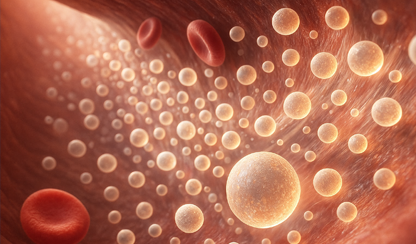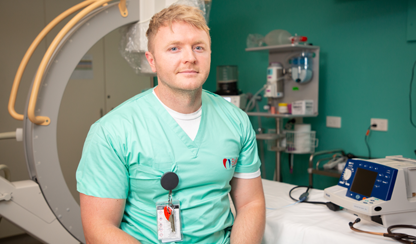25 April 2024
Media release

An Australian researcher says we should consider cholesterol screening earlier in life, with his team’s latest research showing that interventions to prevent and reduce ‘bad’ cholesterol in childhood and young adulthood may help prevent premature heart disease later in life.
In the prestigious Journal of the American Medical Association, researchers from the Baker Heart and Diabetes Institute show that individuals who resolve high levels of all forms of bad cholesterol (known as non-HDL-cholesterol) by adulthood have a similar risk of cardiovascular disease to those who never had high levels.
Senior author, Associate Professor Costan Magnussen says dyslipidaemia in children is silent and potentially deadly. It is characterised by high levels of bad cholesterol including LDL-cholesterol, and triglycerides and contributes to the build-up of plaque in the arteries.
Associate Professor Magnussen says there is widespread research to show that cardiovascular disease begins early in life. “We should be having conversations about screening and prevention much earlier in life rather than deferring this until mid-adulthood when the disease is often advanced and preventive measures may be less effective,” he says.
Pivotal research in this field is also increasingly supportive of this. This is shown by recent best evidence from the International Childhood Cardiovascular Cohort Consortium which linked five traditional risk factors in childhood (body mass index, total cholesterol, triglycerides, systolic blood pressure, and smoking) to fatal and non-fatal cardiovascular diseases in adulthood.
Associate Professor Magnussen says: “Abnormal ‘bad’ cholesterol in childhood, which is impacted by our genes, environment and lifestyle, is a significant concern. However, the good news is that research increasingly shows that early intervention could positively impact the trajectory of a person’s heart health.”
He says data in this latest study, which involved following more than 5100 individuals in the US and Finland over a long-term, indicated there was a window of opportunity prior to mid-adulthood when effective interventions may reverse the detrimental effect of childhood and young adulthood dyslipidaemia on heart disease risk later in life.
While Associate Professor Costan acknowledges lipid screening in childhood is contentious, he says groups like the American Academy of Pediatrics have recommended population-wide lipid screening for children aged 9-11 years since 2011 although implementation is low.
“We should at least be having the conversation about tackling elevated ‘bad’ cholesterol much earlier in life,” he says. “It may mean that we need to be more prescriptive about lifestyle interventions and increase awareness about this issue in childhood, adolescence, and young adulthood, before it leads to a heart attack or stroke in later life.”
And while statin-use may be useful for some who have a genetic predisposition, he says the majority with elevated ‘bad’ cholesterol would likely benefit from stricter lifestyle intervention. For example, a study published by Associate Professor Magnussen’s group earlier this year showed the influence of infancy-onset dietary counselling over 20 years nearly halved the odds of maintaining high levels of ‘bad’ cholesterol.
Note: Dyslipidaemia in children differs to familial hypercholesterolaemia which is caused by the inheritance of single gene mutations that impairs cholesterol metabolism and leads to very high cholesterol levels and poor cardiovascular outcomes.
For further information or to organise interviews please contact:
Tracey Ellis
T: 03 8532 1514
M: 0433 781 972
E: tracey.ellis@baker.edu.au





